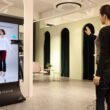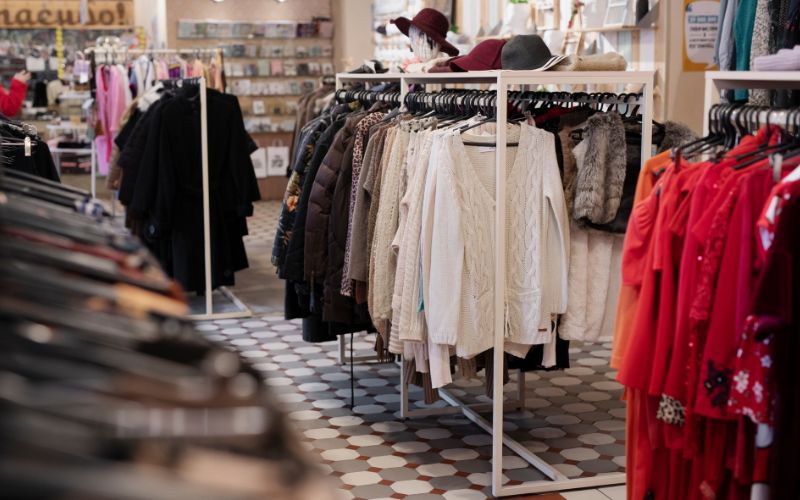Executive Summary:
Clothing Detection Enhances Customer Experience by offering personalized recommendations and virtual try-on solutions. By leveraging artificial intelligence and computer vision, retailers can curate tailored product suggestions based on individual preferences, driving customer satisfaction and loyalty. Virtual try-on features enable customers to visualize themselves in different garments, leading to informed purchasing decisions and reduced returns. This transformative technology empowers fashion retailers to understand their customers better, streamline operations, and create a customer-centric ecosystem that fosters stronger relationships. Clothing Detection Enhances Customer Experience, the future of fashion retail, elevating the customer experience to new heights.
Introduction:
The retail environment for fashion has changed in the past decade. The industry has embraced numerous innovations to improve customer experiences and stay ahead in the cutthroat market due to the rapid evolution of technology.
In particular, clothing identification technology has emerged as a game-changer, giving merchants strong tools to understand their clients better and provide individualized experiences.
By utilising apparel detection solutions, retailers can provide individualized recommendations and design seamless, immersive shopping experiences tailored to customers’ tastes and preferences.
This blog examines how garment detection affects the fashion retail industry, demonstrating how it improves client pleasure and fosters company expansion.
Personalized Recommendations: The Power of Apparel Detection Solutions
The modern shopping experience has evolved to include personalized recommendations, particularly in the retail fashion sector. Today’s consumers demand personalized recommendations that fit their own tastes, preferences, and lifestyles.
Retailers can now use apparel detection solutions as a formidable tool to unlock the potential of data and artificial intelligence. Clothing detection enhances customer experience.
- Getting Consumer Preferences:
To analyze a massive amount of data about client preferences and behaviours, apparel detection solutions use advanced algorithms. These programs can monitor a client’s web browsing habits, previous purchases, and interactions with the retailer’s website or app.
Additionally, they may process real-time information from shopper activities in-store, such as trying on things, expressing style preferences, and providing feedback to salespeople.
- Integrating Data Sources Effortlessly:
The capability of apparel detection solutions to effortlessly combine data from diverse sources is one of their main advantages. Retailers frequently gather information from customers’ online purchasing habits, loyalty programs, social media interactions, and even information they voluntarily provide, such as body measurements and fashion preferences.
By combining these data points, retailers can establish a single perspective on each customer’s buying journey, enabling more precise and contextually appropriate recommendations.
- Contextual and Real-Time Suggestions:
As clients interact with the site, recommendations can be created instantly thanks to apparel detection solutions’ real-time data processing capabilities.
The technology can analyze their actions in real-time to provide pertinent product suggestions, whether they are looking at outfit inspiration pages, browsing product pages, or adding goods to their basket.
In-Store Experience: Seamlessly Merging Physical and Digital Realms
Apparel detection solutions have unquestionably changed due to the growth of e-commerce and online shopping. To touch, feel, and try on things before making a purchase, customers can do so in a physical, brick-and-mortar store, which continues to be a vital part of the shopping experience
Retailers are now embracing garment detection technology to symbiotically link their businesses’ physical and digital worlds to stay current and competitive. This integration produces totally immersive and linked in-store experiences and engagement.
- Intelligent mirrors and interactive displays:
Interactive displays and smart mirrors within physical stores are made possible by apparel-detecting technology.
Interactive screens can be strategically positioned around the store to give customers a digital touchpoint to browse a wider selection of products, explore other styles, and examine more information about each item.
- Virtual Outfit and Styling Suggestions:
Retailers can provide customers with virtual styling and outfit ideas by integrating clothes-detecting technology in-store. Customers may also have access to interactive screens or tablets throughout the store, in addition to smart mirrors.
They can enter their choices, such as the kind of event they are shopping for or their favourite colour scheme, and instantly receive customized outfit suggestions.
- Size Availability and Real-Time Inventory:
Real-time inventory tracking is made possible by clothing-detecting technology built into the store’s architecture. Customers may verify whether certain items and sizes are available without asking a store employee.
In the event that a particular item is out of stock, the system can offer clients alternate choices or the ability to order the item for home delivery, ensuring they do not leave the store empty-handed.
Enhancing Online Shopping: Addressing Issues with Size and Fit
Online shopping has grown in popularity, providing convenience and easy access to a wide range of goods. However, choosing the proper size and fit is one of the major difficulties buyers encounter when buying clothing online.
To address these issues, apparel detection solutions have emerged as a game-changer, offering creative solutions that guarantee clients discover the ideal fit when purchasing from the comfort of their homes.
- Improved Product Descriptions and Visualizations:
The quality of product descriptions and visualizations offered on online buying platforms is improved by apparel detection solutions. Customers can receive thorough and instructive descriptions of garments from the system by precisely specifying aspects like fabric kind, style, and cut.
Additionally, the technology improves how clothing goods may be seen from different perspectives, allowing shoppers to carefully inspect the item before making a purchase.
- An Online Fitting Experience
The ability to provide virtual try-on experiences is one of the most important developments in clothing detection technology. Customers can virtually “try on” clothing items using their cellphones or laptops thanks to augmented reality (AR) and complex visualizations.
The system may superimpose the chosen clothing item onto the customer’s live image or uploaded photo using augmented reality (AR) technology, allowing them to see how the garment will appear on their body.
Data-Driven Insights: Boosting Business Growth and Customer Loyalty
Technology for clothing detection delivers insightful data about client behaviour and preferences in addition to personalized recommendations. Retailers can use this information to design focused marketing campaigns, and collections based on client demand and trend analysis, and optimise inventory management.
A more effective supply chain, less waste, and a better understanding of client needs are the results that strengthen customer loyalty and promote corporate success.
Conclusion:
In fashion retail, clothing identification technology has proven to be a game-changer, enabling merchants to provide personalized recommendations, enhance in-store and online shopping experiences, and increase client happiness and loyalty.
Fashion merchants can maintain their relevance, respond to the unique interests of their clients, and ensure their future success in a constantly changing market by embracing this cutting-edge solution.
Clothing recognition technology is clearly a part of the future of fashion retail, and those that take advantage of its possibilities will prosper in this fascinating new era of purchasing.
FAQS:
Q) In What specific ways does clothing-detecting technology enhance the purchasing experience?
A) It examines consumer preferences and actions to tailor product recommendations that suit unique tastes and preferences.
Q) Is clothes-detecting technology accessible in real-world retail settings?
A) Interactive displays and smart mirrors can be included in in-store experiences to give customers real-time assistance.
Q) Does it raise consumer satisfaction while lowering returns?
A) Yes, it does reduce ill-fitting purchases and boosts consumer satisfaction by providing precise size suggestions and virtual try-on.
Q) How does it improve retailers’ supply chain efficiency?
A) It gives retailers data-driven insights into customer demand, enabling them to improve inventory control and reduce waste.
Q) Can accessories also be detected by apparel-detecting technology?
A) It can be expanded to include accessories, allowing for personalized recommendations and virtual try-ons for a full ensemble.










